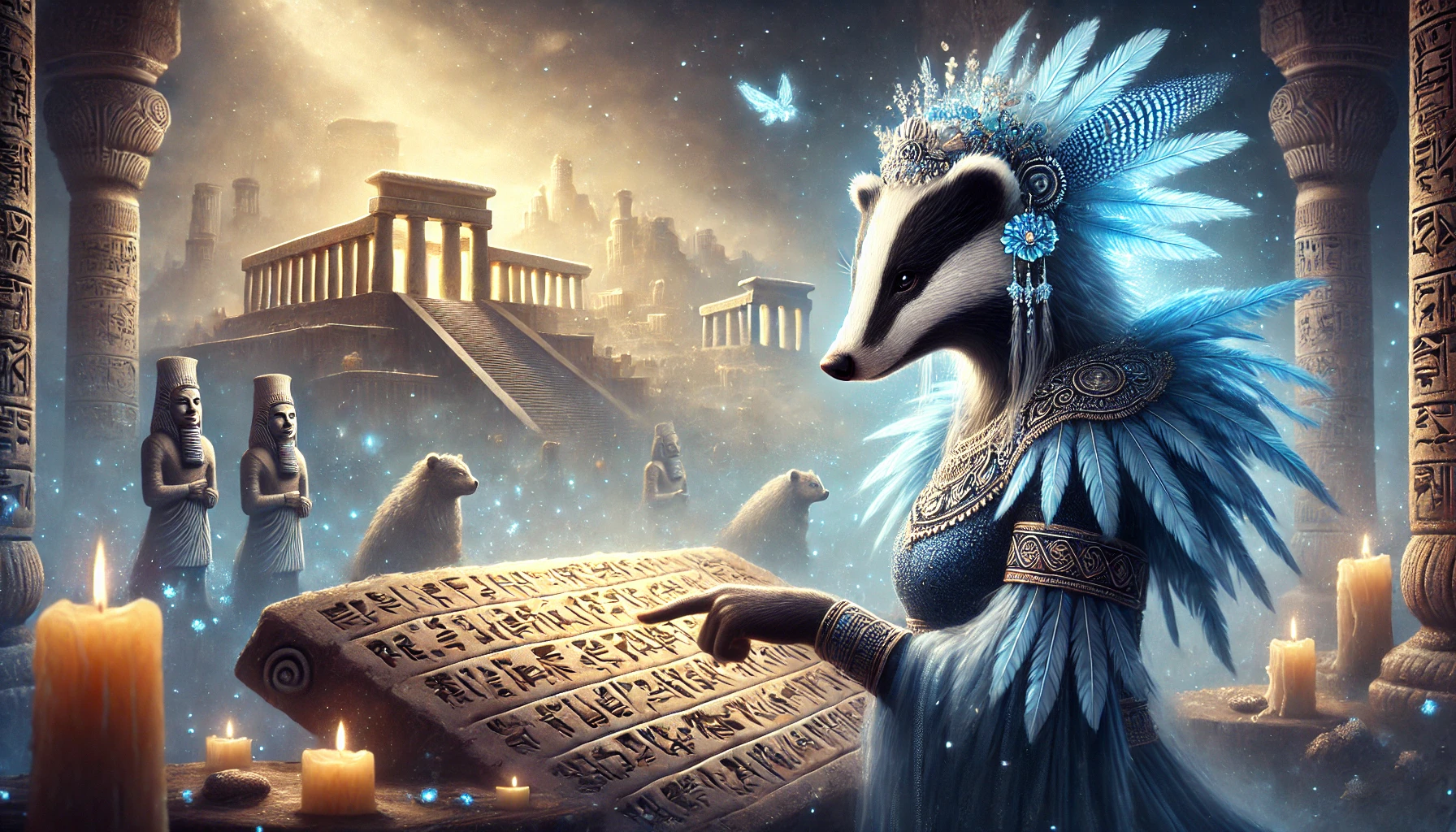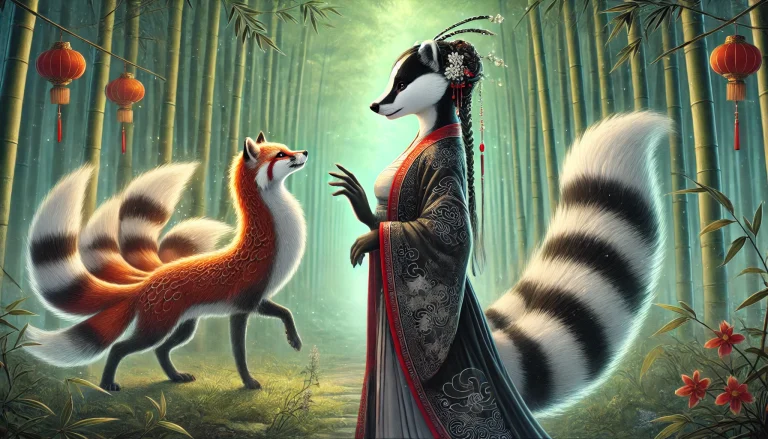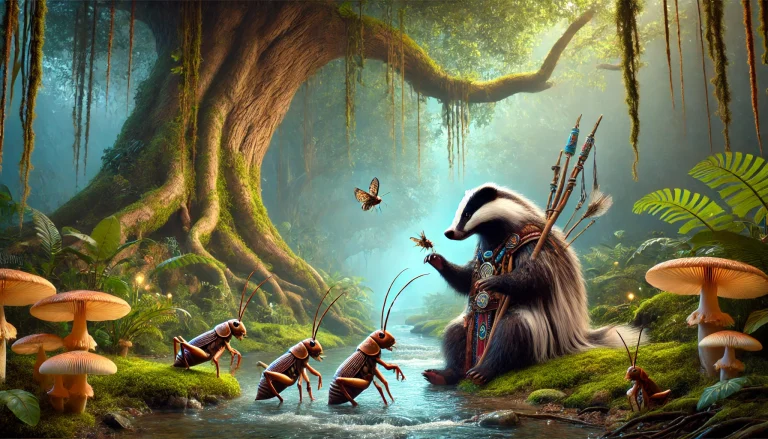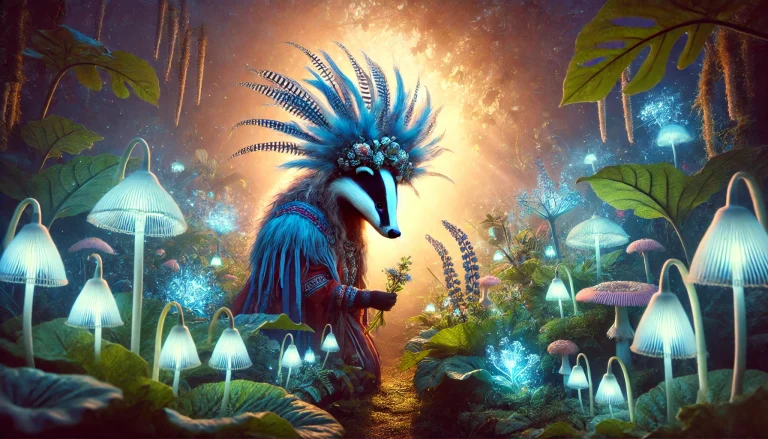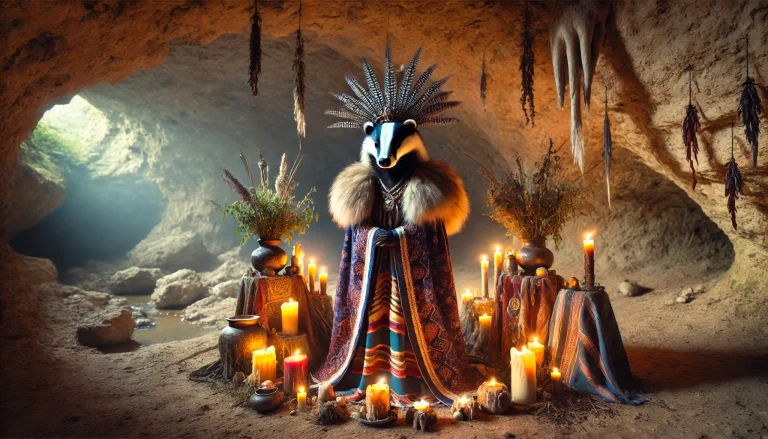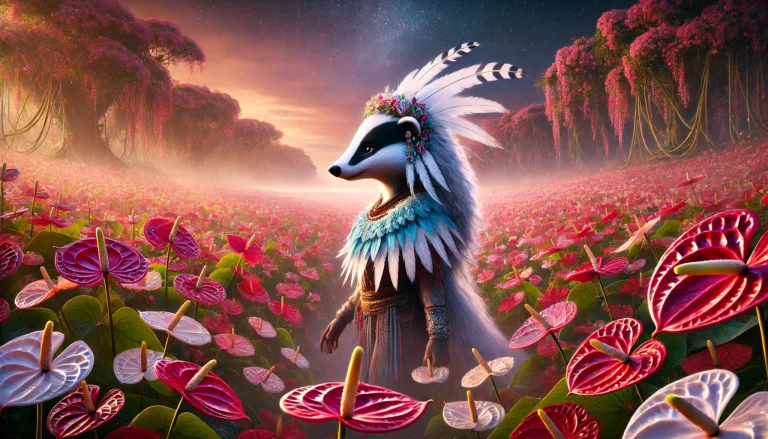A Sumerian mythology is one of the oldest and most complex religious traditions known to mankind. Originating in Mesopotamia, in the region that today corresponds to Iraq, Sumer was a civilization which flourished around 3000 BC. In addition to developing cuneiform writingThe Sumerians left a profound legacy in mythology and religion, which influenced many other cultures, such as the Akkadians, Babylonians and Assyrians.
In Sumerian cosmology, the gods were seen as powerful forces that ruled both heaven and earth, and the myths explained everything from the creation of the world to the origin of human beings and their relationship with the gods.
Index
The Main Sumerian Gods
The Sumerian religion was polytheistwith a wide range of gods and goddesses, each associated with elements of nature and aspects of everyday life. Here are the main gods worshipped in Sumerian mythology:
Anu - The God of Heaven
Anu was the supreme god and ruler of the sky. Considered the father of all the gods, he was responsible for establishing order in the cosmos. His power was supreme, but Anu often remained aloof, entrusting the other gods with the administration of earthly affairs.
Enlil - God of Air and Wind
Enlil was one of the most powerful deities and the ruler of the air and wind. He was seen as the god responsible for giving life and energy to the world, as well as bringing storms and destruction when he got angry. According to the myths, Enlil separated heaven from earth and played a central role in creation.
Enki - God of Water, Wisdom and Magic
Enki, also known as Ea, was the god of water and wisdom, as well as being the master of magic. He lived in the abzuHe was responsible for helping humanity, often intervening on behalf of human beings when other gods tried to punish them. He is one of the most beloved and benevolent Sumerian gods.
Inanna - Goddess of Love and War
Inanna, also known as Ishtar in other cultures, was the goddess of love, fertility and war. Her duality between love and battle reflects the complexity of her character. Inanna is famous for her descent into the underworld, one of the most popular myths, where she faced trials in order to return to life.
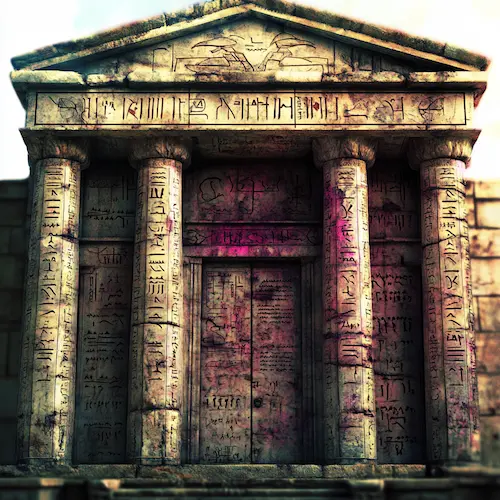
Parallels between Sumerian Gods and Other Mythologies
The gods of Sumerian mythology influenced many cultures that came after, especially in the Mesopotamian region, and their archetypes can be found in various mythological traditions around the world. Here are some interesting parallels between the Sumerian gods and deities from other mythologies:
Anu (Sumerian) and Zeus (Greek Mythology)
Anu, the god of the sky and ruler of the Sumerian gods, shares similarities with Zeusthe king of the gods in Greek mythology. Both are associated with the control of the sky and cosmic forces, and are powerful father figures. Although Anu is less active in Sumerian myths, Zeus has a more direct role in Greek legends, interfering in the lives of mortals more often.
Enlil (Sumer) and Jupiter (Roman Mythology)
Enlil, the god of wind and storm, has strong parallels with Jupiterthe Roman god of thunder and storms. Both wield power over the weather and are authority figures in their respective pantheons. Enlil is responsible for bringing both prosperity and destruction, something also seen in the character of Jupiter.
Enki (Sumer) and Poseidon (Greek Mythology)
Enki, the god of water and wisdom, is similar to PoseidonEnki was the god of the seas in Greek mythology. While Poseidon is more associated with the power of the oceans, Enki has a more symbolic relationship with water as a source of life and wisdom. Both control the element of water, but Enki also has a strong connection with creation and the protection of humanity, being a more benevolent god.
Inanna (Sumerian) and Aphrodite (Greek Mythology)
Inanna, goddess of love, fertility and war, can be compared to Aphroditethe goddess of love and beauty in Greek mythology, and the Venusher Roman counterpart. Although Inanna is also a goddess of war, her duality between passion and destruction reflects a nature similar to that of Aphrodite, who, despite her dominion over love, also brings chaos and conflict.
Ereshkigal (Sumer) and Hades/Persephone (Greek Mythology)
Ereshkigal, the Sumerian goddess of the underworld, has parallels with Hadesthe Greek god of the underworld. However, there is a feminine aspect to Ereshkigal's rule over the underworld, similar to the role of Persephonewho rules alongside Hades. Both Ereshkigal and Persephone represent the cyclical aspect of life and death, symbolizing renewal and rebirth, especially in myths dealing with the cycle of nature.
Dumuzi (Sumerian) and Osiris (Egyptian Mythology)
Dumuzi, Inanna's consort and god of vegetation, is a figure who dies and is resurrected every year, symbolizing the renewal of the harvest. He bears a strong resemblance to OsirisHe is also a god associated with death and resurrection and represents the cycle of life and fertility in the harvest.
The Creation of the World and Humanity
In Sumerian mythology, the creation of the world is covered in various myths, many of which involve the gods Anu, Enlil and Enki. According to the myths, in the beginning there was only chaos, an indistinct mixture of heaven and earth. The god Anulord of heaven, and the goddess Kithe personification of the earth, were united. However, earth and heaven were not yet separate.
It was EnlilEnlil, the god of the wind, separated heaven and earth, establishing order in the universe. After the separation, the sky came under the control of Anu, while Enlil took over the earth and the air. The earth, previously chaotic and uninhabitable, began to organize itself. Mountains rose, rivers began to flow and vegetation sprouted, creating a world ready to harbor life.
The Creation of Humanity
After the creation of the physical world, the gods realized that they needed someone to work the land and take care of their needs. So the god Enkitogether with the goddess of creation, NinhursagThe first human beings were molded from the clay of the earth. Humans were created for the purpose of relieving the gods of physical labor, such as farming and building.
The relationship between the gods and humans was one of servitude: humans worked and offered sacrifices to the gods, who in return granted blessings and protection. The Sumerians believed that a balance between humans and the gods was essential for the prosperity of the world, which is why they built great temples, called zigguratsto honor the deities and maintain this relationship of service and protection.
The Underworld and the Cycle of Life
In Sumerian mythology, the underworld was ruled by the goddess Ereshkigalsister of the powerful Inanna, and was known as Kur. Unlike some other mythological traditions, the Sumerian underworld was not a place of eternal punishment, but rather the inevitable fate of all the dead. When souls descended into the underworld, they lived a bleak existence, with little emphasis on punishment or reward, but there was a continuous cycle of life, death and possible renewal.
Reincarnation and the Natural Cycle
Although the Sumerian underworld was seen as the end of physical life, there was an implicit belief in natural cycles of renewalespecially connected to the agricultural world. The myth of the descent of Inanna to the underworld reflects this cycle of death and rebirth. Inanna, goddess of love and fertility, descends into the underworld in an attempt to expand her power and challenge her sister, Ereshkigal. Upon entering the underworld, Inanna goes through trials and ends up being imprisoned and killed.
However, with the help of the god EnkiInanna is revived, symbolizing the cycle of death and rebirth. This narrative has a profound agricultural meaning: just as seeds need to "die" when they are buried in the earth in order to germinate and give life to new plants, the Sumerian gods believed that the cycles of life and death were necessary for the renewal of nature.
Rebirth on Earth and in Spiritual Life
Although the idea of reincarnation in Sumer is not as elaborate as in traditions such as Hinduism, there are indications that the Sumerians saw death as part of a larger cycle. The very renewal of crops, Inanna's return to life, and the continuous flow of life and death in nature suggest that the Sumerians believed in a form of reincarnation. cyclical rebirthIt was not an absolute end, but a necessary part of the larger process of transformation. The underworld, therefore, was not seen as an absolute end, but as a necessary part of this larger process of transformation.
This connection between death, renewal and the return of life also appears in Sumerian festivals, which celebrated the harvest cycle and honored the gods responsible for ensuring that life was always renewed after periods of difficulty or "death".
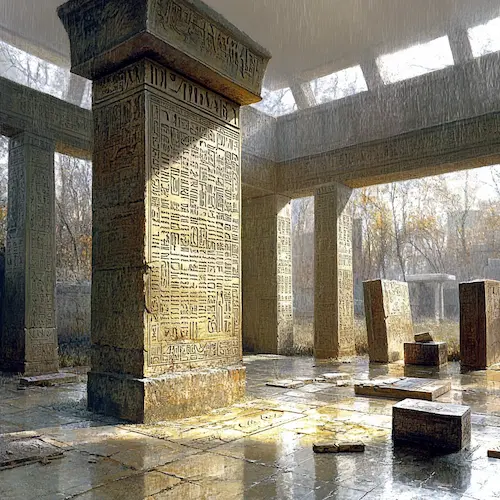
Legacy and Influence of Sumerian Mythology
Sumerian mythology left a profound legacy that not only shaped the later civilizations of Mesopotamia, such as the Akkadians, Babylonians and Assyrians, but also influenced the mythological traditions of distant cultures. The richness of its myths, centered on the relationship between gods and humans, the cycles of creation and destruction, and the forces of nature, served as the basis for many aspects of subsequent religions and mythologies.
Influence in Mesopotamia
The civilizations that succeeded the Sumerians in Mesopotamia inherited much of their mythological structure. The AkkadiansFor example, they adopted many of the Sumerian gods, renaming them and adapting their stories to their own traditions. Mardukthe main god of the Babylonians, shares traits with Enlil and Enki, reflecting how these Sumerian deities were absorbed and reconfigured. Creation myths, such as the separation of heaven and earth and the creation of man from clay, appear in Akkadian and Babylonian texts, such as the famous creation epic, the Enuma Elish.
The Epic of Gilgamesh
A notable example of the Sumerian legacy is the Epic of GilgameshGilgamesh is one of the oldest epics in world literature, whose roots lie in Sumerian mythology. The character Gilgamesh, king of Uruk, first appears in Sumerian texts as a semi-divine king. His quest for immortality, his adventures with his companion Enkidu and his encounter with the goddess Inanna/Ishtar are narratives that transcend Sumer and were adapted by the Akkadians and Babylonians. The myth explores universal themes of life, death, friendship and the search for the meaning of existence, and is one of the first literary representations of the human condition.
Parallels with Other Mythologies
The Sumerian themes of creation, death, rebirth and the interaction between gods and humans also found an echo in other mythologies outside Mesopotamia. In Egyptian mythology, for example, the cycle of death and resurrection of Osiris presents parallels with the myth of DumuziInanna's lover, who dies and is reborn every year, representing the agricultural cycle of planting and harvesting. This archetype of a god who dies and is reborn can be observed in various traditions around the world, such as in the Greek myth of Demeter e Persephone.
Influence on the Bible and Western Culture
Sumerian myths also influenced later religious texts, especially biblical accounts. The story of deluge Sumerian, where the god Enlil decides to destroy humanity, but Enki warns the hero Ziusudra (later adapted as Utnapishtim) to build an ark, has clear similarities with the account of the flood in Noah in the Bible. These narratives about great catastrophes and the relationship between the gods and humanity have shaped the monotheistic religious traditions of the Middle East.
In addition, the impact of Sumerian mythology extends to the field of modern literature, philosophy and religious studies. Many scholars consider Sumerian myths to be the basis for much of Western literature, especially in the way they address themes such as mortality and the search for wisdom. The "Epic of Gilgamesh", for example, continues to be studied as a literary work of great influence, revealing the complexity of human emotions and the inevitability of death.
Continuous Renewal of Interest
Today, Sumerian mythology is still a rich source of study and inspiration. Archaeologists and historians continue to discover and translate new cuneiform tablets, revealing new layers of these ancient myths. These texts provide not only a window into the worldview of the Sumerians, but also continue to offer reflections on human nature, spirituality and life in society.
Conclusion
Sumerian mythology is one of the oldest pillars of human understanding of the spiritual and physical world, offering myths that deal with universal themes such as creation, death, rebirth and the interaction between gods and humans. Over the millennia, their stories and gods have influenced not only Mesopotamia's neighboring cultures, such as the Akkadians and Babylonians, but have also shaped religious, literary and philosophical traditions around the world. From the epic of Gilgamesh to the myths of creation and the flood, Sumerian narratives continue to resonate, reflecting the eternal cycles of life, death and renewal.
In addition, the influence of Sumerian mythology can be seen in the religious and mythological texts of civilizations as far away as the Greeks, Egyptians and even in Judeo-Christian traditions. By studying these myths, we can better understand the roots of many spiritual and cultural concepts that still impact us today.
As an inexhaustible source of ancient wisdom, Sumerian mythology offers not only a profound insight into the past, but also lessons that remain relevant to the existential questions that humanity continues to face: the search for the meaning of life, the relationship with the gods and the mystery of mortality.
I'm passionate about magic and spirituality, always looking for new knowledge about rituals, energies and the mystical universe. Here, I share magical practices and spiritual tips for those who want to connect more deeply with themselves and the world around them, all in a light and accessible way.

